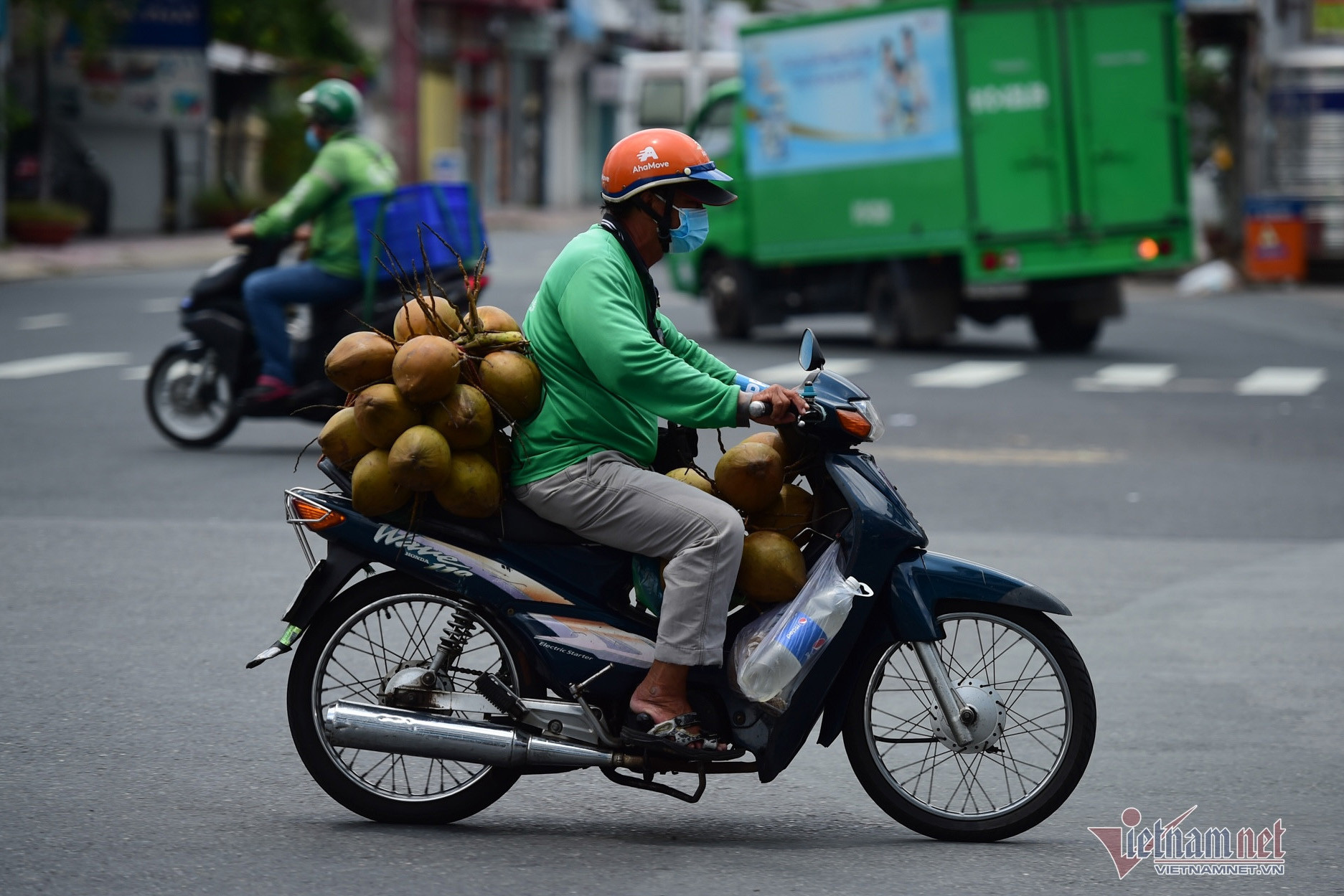Ho Chi Minh City is planning a major transition: shifting all 400,000 ride-hailing drivers from gasoline-powered to electric motorcycles within the next three years. It's an ambitious goal aligned with the global movement toward sustainable urban development.
But without a thoughtful roadmap and comprehensive support policies, this green dream could quickly become a burden for hundreds of thousands of workers already struggling to make ends meet.
A staggering set of figures

According to official statistics, Ho Chi Minh City has about 7.6 million motorbikes and over 800,000 cars. Of those, more than 400,000 motorbikes are used by ride-hailing drivers for passenger and delivery services via digital platforms. While this group accounts for less than 5% of all vehicles, they play a vital role in keeping the city functioning amid worsening traffic congestion.
Ride-hailing drivers are on the road from early morning to late at night. They not only transport passengers and deliver goods for e-commerce businesses but also help reduce the public’s need for private vehicle ownership. Yet, they are among the most vulnerable workers in society.
The average income of a ride-hailing driver is currently around VND 8.7 million (approx. USD 340) per month - below the city average of VND 10.9 million. Most are migrant workers with high living expenses and little to no savings. A standard electric motorbike today costs more than their monthly income - a serious financial hurdle.
“We survive on our daily earnings. If we’re forced to switch to electric vehicles without specific support, many of us may need to borrow money or even quit the job,” said Hung, a driver in Binh Thanh District.
Who pays the price if the switch is mandatory?
If the transition is implemented as a compulsory policy, it could directly affect the livelihoods of hundreds of thousands. For many drivers, their motorbike isn’t just a vehicle - it’s their most valuable asset.
Losing their job would not only push these individuals into hardship but could also disrupt the city’s transport and logistics services, potentially impacting consumers through delayed deliveries and reduced ride availability.
From a legal standpoint, the matter is even more complex. The Constitution, the Law on Enterprises, and the Law on Investment all safeguard the right to do business, including for platform companies. Meanwhile, gasoline motorbikes remain fully legal under the current Road Traffic Law and the Law on Environmental Protection.
Any rigid administrative decision risks clashing with existing legislation and could create barriers to employment for already marginalized workers.
Platform companies are already navigating multiple layers of regulation. Forcing them to contract only with drivers using electric bikes would effectively add a new business condition - something that must be codified by law, not imposed through administrative orders.
Moreover, draft regulations targeting platform businesses are showing flaws. They require companies to shoulder additional responsibilities that fall beyond their core function as service connectors.
Globally, no country has mandated a transition from gasoline to electric motorcycles solely for ride-hailing services - not even in mature EV markets like China.
Lessons from Shenzhen and New Delhi
There are, however, successful international models. Shenzhen (China) and New Delhi (India) offer valuable case studies.
Shenzhen offered up to VND 7 million (approx. USD 275) in subsidies per two-wheeled EV, with an additional VND 5 million for scrapping old gasoline bikes. Ride-hailing drivers were granted low-interest loans, received 30% electricity discounts at charging stations, and benefited from free land access to install battery-swapping stations in supermarkets and parking lots.
New Delhi applied similar support: subsidies ranging from VND 3–9 million, annual road tax exemptions (worth approx. VND 600,000), and low-interest EV purchase loans. India’s FAME II program earmarked over 60% of its budget for vehicle subsidies and more than 30% for charging infrastructure.
Thanks to these aggressive policies, the transition in both cities progressed smoothly without major social disruption.
A practical and compassionate roadmap is essential
Transitioning to green transport is inevitable, but success depends on how the process is managed. A flexible, human-centered roadmap that prioritizes workers’ livelihoods is essential.
Experts recommend beginning with full-time drivers and those using motorcycles older than 10–12 years - groups with higher mileage and emissions. At the same time, offering multiple vehicle options, including hybrids, can ease the financial burden while still reducing emissions.
Ho Chi Minh City should also design financial support packages such as direct subsidies, buyback incentives for old vehicles, and preferential loans specifically for ride-hailing drivers - especially migrant workers. Rapid development of charging infrastructure at key locations such as markets, bus terminals, and supermarkets - where drivers frequent - is equally crucial.
A green city cannot be realized if the very people who keep it moving are left behind. A policy that is both rational and compassionate, with a clear, phased implementation plan, can simultaneously protect the environment, sustain livelihoods, and promote domestic green industry growth.
If done right, Ho Chi Minh City could emerge in a few years not only as a vibrant and dynamic urban hub - but also as a regional symbol of sustainable mobility.
Tu Giang